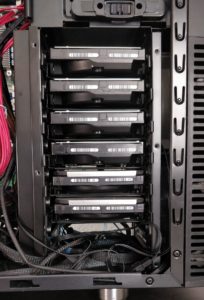So this story starts with copious amounts of external drives, flash drives, and free cloud storage accounts filling up with files that I needed to store.
After a while, it became clear that I needed a better solution.
This better solution needed to fulfill several requirements:
- Allow me to store my data in a more organized manner
- Allow me to store files that I do not want to store on the internet
- Be relatively simple to access my date
- be able to expand capacity
- Cost me as little in software licenses as possible
Now with those requirements, you probably wondered a few things: why not buy a NAS? What is it that you do not want to store on the internet? Couldn’t you just get a larger external drive and put all of it there? Well I could have bought a NAS, but that wouldn’t be much fun. As for files… I have a lot of them, from vacation photos and iTunes music, to recovery images of my laptop and servers, and even some digital copies of install media that I do legally own, but could get me in trouble if they were placed online (and I’d rather not want to hire an entire legal team just to look into that for each and every install media!)

Well my solution then was simple: find a NAS OS, get some hardware, and go vanilla… but then what about my other single purpose servers just using energy or space running things that can run with less power? That is where virtualization comes in! As long as you have enough CPU cores and memory, you can make as many of those as you need.
I will be dividing this project up, with this first part being the hardware.
Here’s my parts list. *Full disclaimer, these were cheaper parts at the time that I purchased them.